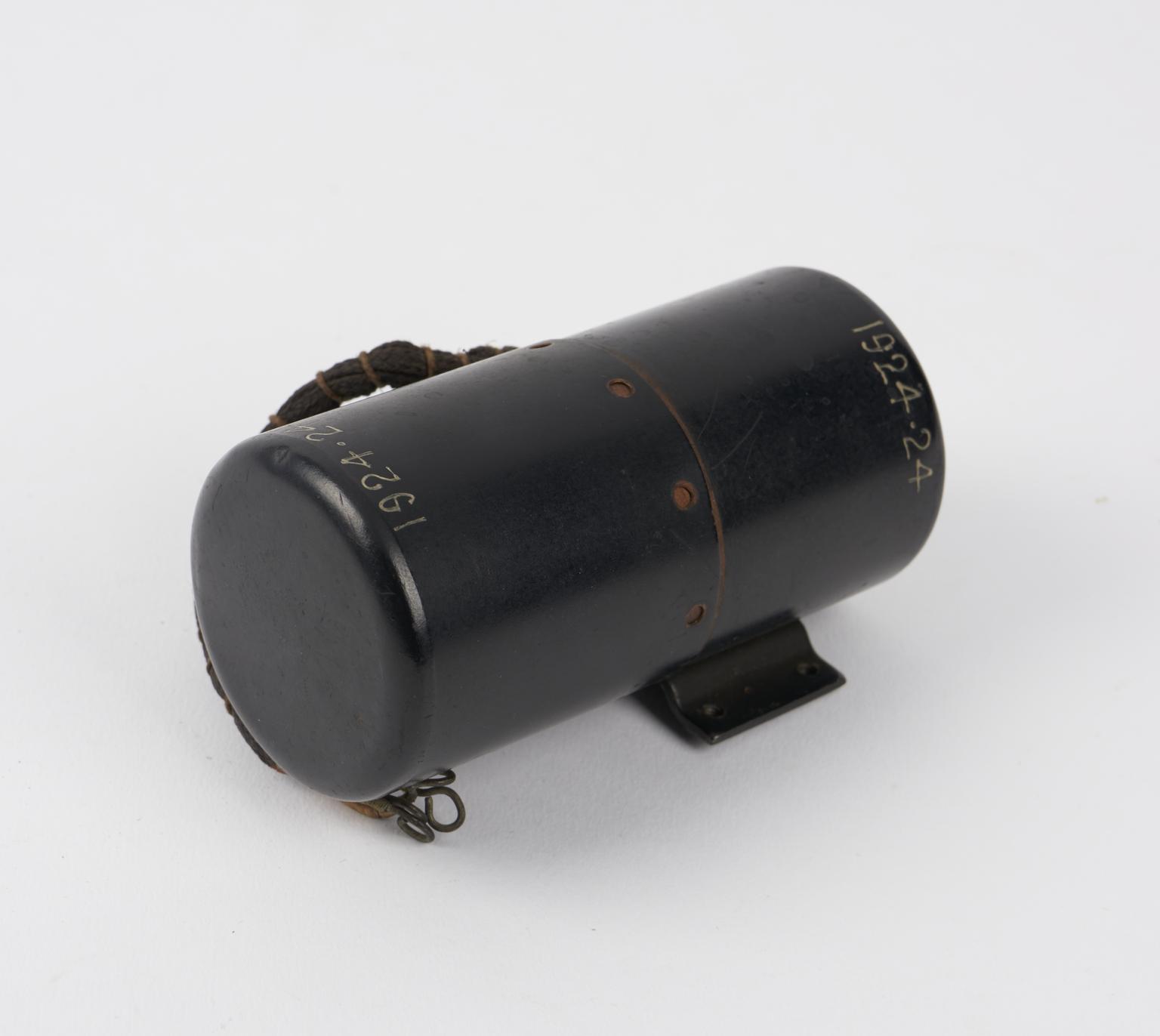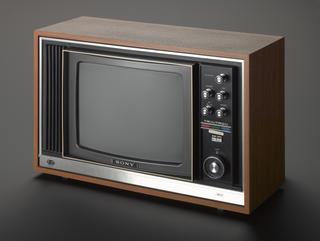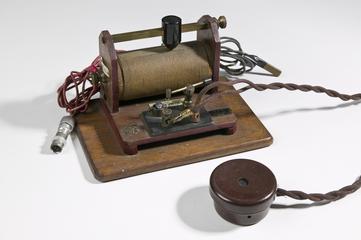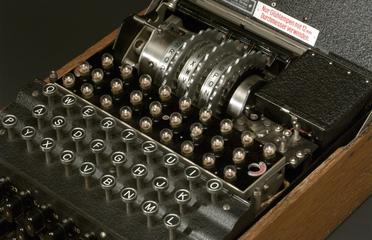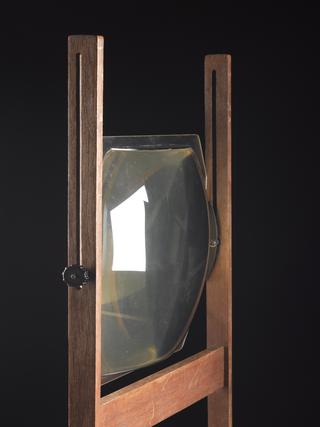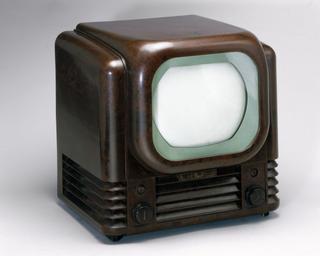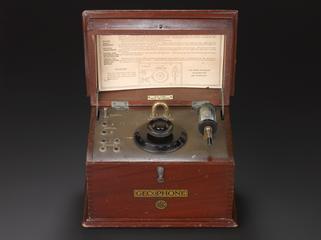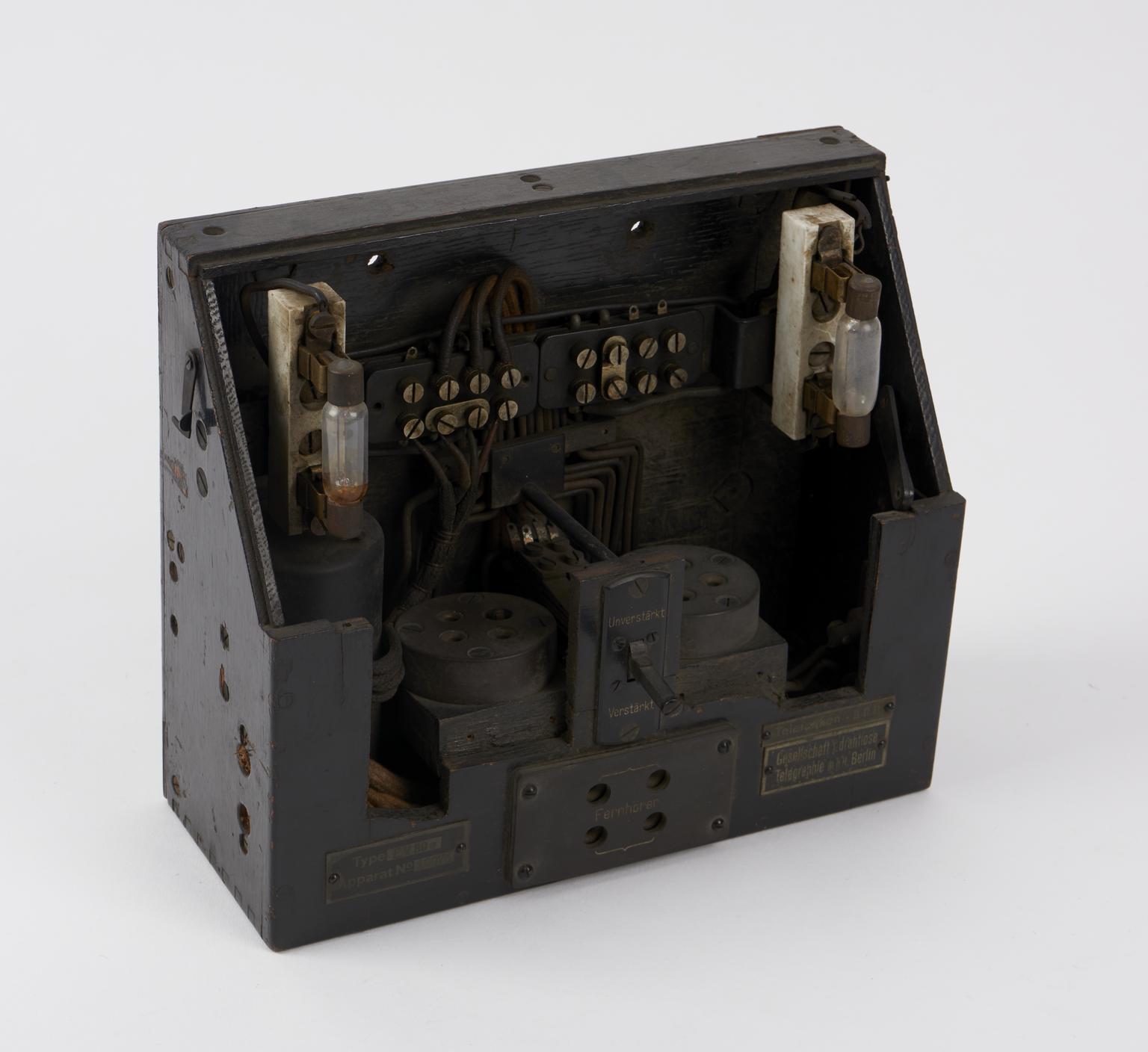
German two-valve low-frequency amplifier from the First World War, 1914-1918
Type EV89 two-valve low-frequency amplifier, Germany, 1914-1918. Serial number 10,073. Missing valves.
More
This German amplifier was used during the First World War, 1914-18. Amplifiers of this type were used to 'listen in' on Allied telephone and telegraphy communications during the war.
The chief point of interest lies in the use of iron wire current limiters in series with the triode filaments. They consist of coils of iron wire enclosed in hydrogen in a glass tube.
The resistance of iron increases with temperature, so that slight variations of filament current due to fluctuations in battery voltage are checked.
The transformers have open iron cores and are shielded both magnetically and electrically by concentric cases of iron and brass. This can be seen in this example, which has been taken apart.
The switch connects the receiver, which was made by the Telefunken Company, with the telephones, either directly or through the amplifier.
